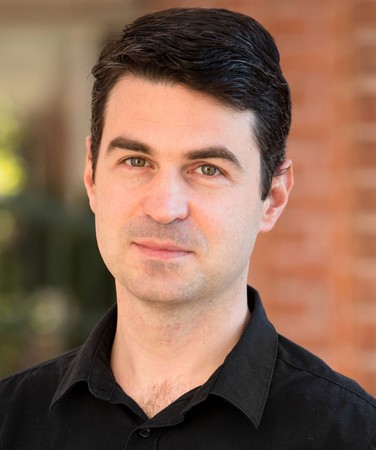Johns Hopkins astrophysicist Brice Ménard has been recognized by the Packard Fellowship program as one of the nation's most innovative young scientists and engineers, joining 17 others as recipients of a 2014 David and Lucile Packard Foundation Fellowship for Science and Engineering.

Image caption: Brice Ménard
The fellowship includes an unrestricted grant of $875,000 allocated over a five-year period, which is designed to give talented young researchers an opportunity to explore new frontiers, take risks, and follow uncharted paths that may lead to important discoveries. Ménard, an assistant professor in the Henry Rowland Department of Physics and Astronomy in the Krieger School of Arts and Sciences, plans to use this fellowship to work on a new technique to estimate the distance of galaxies and then explore new directions of research.
"This is terrific news," Ménard said. "I am very honored to receive such an award. Having the opportunity to push my research into new directions and try out completely new ideas is fantastic. And this is exactly what I am going to do."
Added Daniel Reich, chair of the Department of Physics and Astronomy: "It is very exciting to see Dr. Ménard receive this award. Brice's work combines the analytical and mathematical sophistication of the best theoretical astrophysicists with the imagination and intuition of the best observational astronomers, and he is now pursuing a revolutionary new approach to the analysis of astronomical data. The Packard Fellowship will enable him to move into new areas, and we are confident that he will continue to shed light on the most important questions in astronomy."
Ménard explores the universe using the power of statistical analyses applied to large astronomical datasets. The datasets typically contain millions of stars and galaxies observed by telescopes located around the world and in space.
"These sky surveys are extremely rich datasets," he said. "Despite years of analyses, we keep uncovering new astrophysical phenomena from these observations. The main limitation is set by our own ideas and imagination."
Ménard is currently working with graduate students and postdoctoral fellows on a new technique to estimate the distance of galaxies. He said observing galaxies is fundamentally a 2D process: we see them on the sphere of the sky, but that does not tell us how far away each of them is.
As a result, said Ménard, astronomers have had to use approximate relationships linking the apparent colors of galaxies and their possible distances. But he said this technique, called photometric redshift, is not always accurate and does not work with all types of objects. Ménard's technique adds a third dimension.
"Our new approach does not rely on the colors of light," he said. "Instead, we extract information from specific patterns in the way galaxies tend to group with each other, due to gravity. As a result, this new approach can be applied to any type of observations and any type of galaxies."
Knowing how far away an object in the sky is located is important, he said, because looking far away is seeing back in time, and observing galaxies at different distances allows scientists to study how the universe evolves with time.
Ménard's interest in astronomy dates back to his youth, gazing up at the night sky while growing up in France. He studied in Paris and then earned his PhD working at the Max Planck Institute for Astrophysics in Germany and the Institut d'Astrophysique de Paris. Subsequently, he was a postdoctoral member at the Institute for Advanced Study in Princeton, N.J., and a senior research associate at the Canadian Institute for Theoretical Astrophysics in Toronto. In addition to being on the faculty at Johns Hopkins, he is a joint member of the Kavli Institute for Physics and Mathematics at the University of Tokyo.
His research has led to the detection of gravitational magnification by dark matter around galaxies, the discovery of tiny grains of dust in the intergalactic space, and a better understanding of how light rays propagate throughout the universe and how gas is distributed around galaxies.
Since he joined the Johns Hopkins faculty, Ménard has received the 2011 Henri Chrétien grant, awarded by the American Astronomical Society; was named the 2012 Outstanding Young Scientist of Maryland; and received 2012 Sloan Research Fellowship.
With the support of the Packard Fellowship he plans to investigate completely new, and therefore high-risk, directions of research in astrophysics.
"There are many new ideas that I have wanted to explore," he said. "It is nice to know that I do not have to convince any funding agencies of their feasibility. I can start working on them right away and follow my own intuition."
Posted in Science+Technology
Tagged astrophysics, space, brice menard







